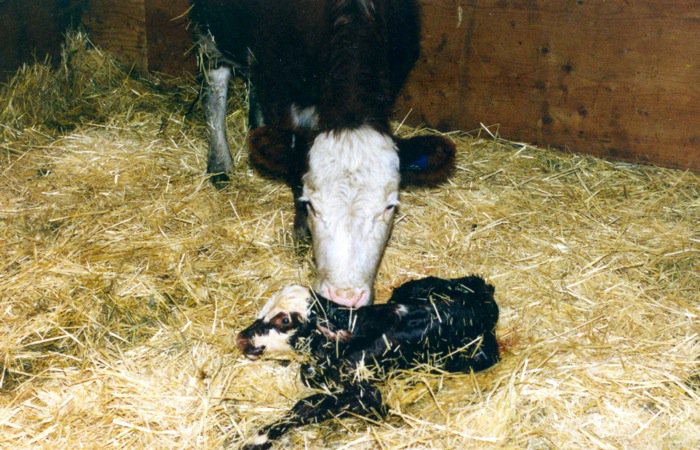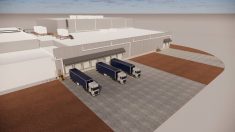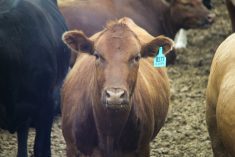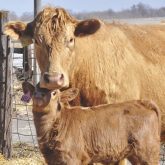Numerous articles have been written over the years on how and when to intervene at calving, how to recognize malpresentations, and what to do about them.
Producers now see fewer and fewer calving-related problems as our breeding has improved and we select for easy-calving heifers with larger pelvises and moderate birth weight bulls. Ensuring cattle have adequate exercise with good nutrition (including access to balanced minerals) will ensure cows have adequate strength for uterine contractions and calves are vigorous when they are born.
I have always stated at calving time the goal is to get a lively vigorous calf from every cow not just an “alive” calf. Overpulling or pulling too fast (and not in unison with the cow’s contractions) is not an option. I would suggest since we all don’t need to pull or assist calvings very often, we need to revisit our equipment and review calving guidelines and protocols every calving season just to be prepared. Even though we no longer need to assist many calvings, timely intervention — and more importantly, recognizing your limits — are critical as time ticks along.
Read Also

Dennis Laycraft to be inducted into the Canadian Agricultural Hall of Fame
Dennis Laycraft, Executive Vice President of the Canadian Cattle Association, is one of this year’s inductees into the Canadian Agricultural Hall of Fame. Laycraft was nominated for his many contributions to the cattle industry.
With each calving an internal clock starts ticking as the cervix of the cow opens up and the delivery process starts. In my view, it is imperative to watch and record the time of the initiation of calving as this makes it very easy to decide when to intervene. Usually in one hour for cows and 1-1/2 hours for heifers, progress should be made. If continual straining happens, blood appears first, or the cow appears hunched over and nothing is being presented, it may be wise to check her out.
Since we don’t need to assist many cows anymore, there is sometimes a reluctance to intervene. I’ve found in working with many experienced producers over the years, that their intuition usually guides them. If they feel something isn’t quite right, intervening at that time and checking the cow or heifer out earlier rather than later has usually avoided a wreck. Whether it is a full breech birth (both back legs pointed forward), head back, or torsion, a farmer’s intuition is usually correct. Something is not right and intervention is necessary.
Knowing when to call for help can also be a difficult decision to make. With any malpresentation, improperly dilated cervix, or situation which requires fetal manipulation and extraction, bear in mind that progress should be made every 15 minutes. If not, call for assistance.
In my mind, veterinarians should be called for most full breech births. It takes careful manipulation in full breech births to avoid tearing the uterus and this is where mistakes can happen, leading to death of the cow in some cases.
Torsions are a very rare thing indeed, so recognizing them is the first step in getting help with the correction. Torsions present similar to a full breech birth with the cow or heifer going through what appears to be the first initial signs of labour but then there is no progression. There is no water bag presented or fluid discharge, yet the cow/heifer appears uneasy. When examining the cow vaginally, there feels like bands of tissue running every which way and it does not feel normal. You may be able to wiggle your hand and reach the calf, but it feels like you are going down a loose corkscrew and your hand may be upside down by the time you reach the calf. This is a sure sign it is a torsion and immediate veterinarian intervention is required.
Your veterinarian may be able to correct the torsion. Some do it by manipulation, or casting the cow and having helpers roll the cow while holding on to the calf per vagina. Others use a detorsion rod but in probably half the cases either the twist is too tight or there is no room to detorse and a caesarean section is required.
Torsions are just a fluke — there is no hereditary component and I have never seen a cow develop a torsion again (and if it did, the odds would be very, very low). I have never seen an incidence rate reported, but it would be one every thousand to several thousand births for sure. Veterinarians would be called to examine most torsions. One time a producer with only 120 cows had two torsions a week apart and was very quick to recognize the second one. Most torsions are 180 degrees but some can be 360 degrees or more. The real important part with torsions is recognizing them and whenever I get one I have everyone examine the cow vaginally so they are better able to recognize it next time. Call for help and hopefully a successful outcome is the result.
With all calving abnormalities — including improper cervical dilation, to twins coming totally mixed up to placenta presented first or a vaginal prolapse in the way — call for help or take the animal to the veterinary clinic if no progress is made in 15 minutes.
These are not very common abnormalities anymore, so a veterinary bill to get a successful outcome and potentially save the cow and calf is what we all strive for.
I hope everyone has a great and, hopefully, uneventful calving season.
















